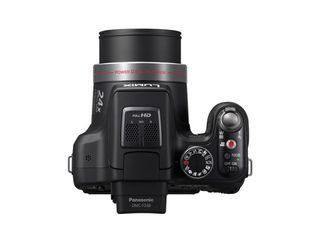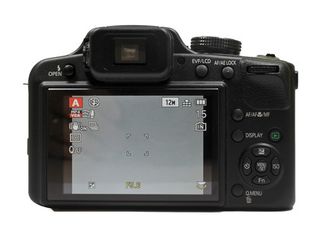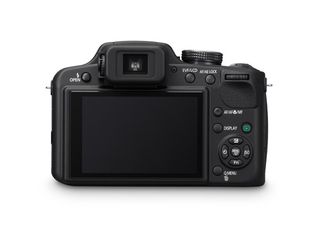Why you can trust TechRadar
The FZ48's SLR-shaped body is constructed from high-quality plastic, which feels quite solid and robust. The deep finger grip has a soft rubberised coating, which provides a firm grip of the camera.
The control layout is typical of Lumix bridge cameras, with the zoom control located on a bezel around the shutter release and a small thumb dial located on the rear for adjusting exposure.

Video recording is initiated via the one-touch recording button - marked in red on top - just behind the shutter release. The placement of this control is excellent, as it ensures that video recording won't be started accidentally, but is still within easy reach of an index finger.

A three-inch LCD monitor fills much of the FZ48's rear, and although the resolution is only a modest 460,000 dots, it's plenty clear enough for composing images and it is easy to see in bright lighting conditions.
The electronic viewfinder located just above has a resolution of 201,600 dots and is easy to use, even with spectacles. A dioptre adjustment dial is provided for those who prefer not to use their glasses.
Menus are clear and easy to navigate - in large, bold text - with the directional buttons on the rear of the camera. Quick-access buttons are provided for focus modes, AF/AE Lock, self timer, exposure compensation, ISO sensitivity and a function menu containing options for contrast, colour and noise reduction.

Pressing the Q.Menu button also reveals a wide array of settings that are also found in the menu system - which is a nice touch, as it allows quicker access to many common adjustments.
Continuous bursts of shots can be taken at a respectable 3.7 frames per second for a burst of seven images, which can be useful for capturing action.
The FZ 48's Sonic AF system performs really well, locking onto subjects quickly and accurately, even at the telephoto end of the zoom range and in low light conditions. Face detection can also be enabled, which does an excellent job of finding faces in the frame and focusing rapidly.

